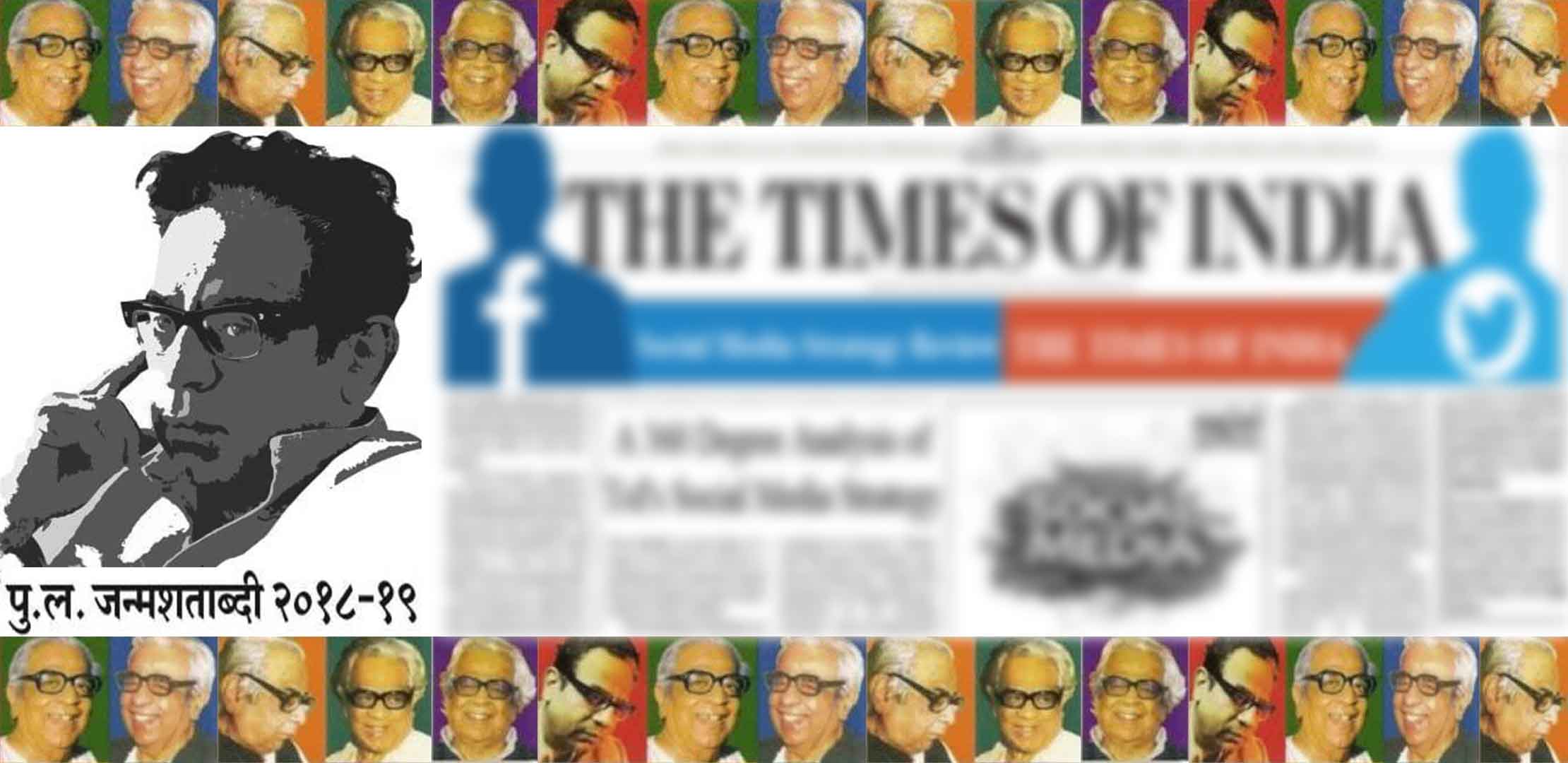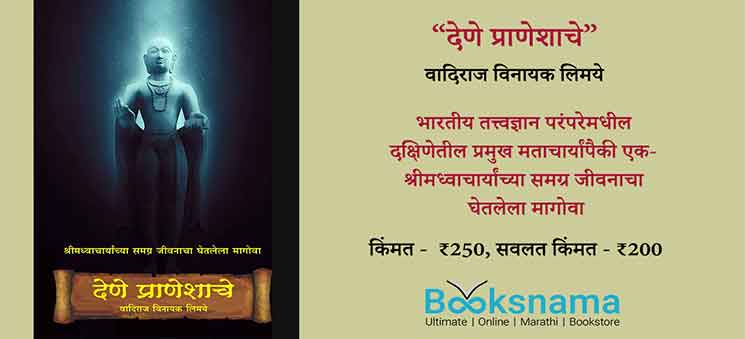“तुम्हीच मला सांगा, ‘टाइम्स ऑफ इंडिया’नं पुलंच्या निधनाची मोठी बातमी का वापरायची?”
पडघम - माध्यमनामा goo.gl/Wt72KQकामिल पारखे

- प्रातिनिधिक चित्र
- Mon , 21 January 2019
- पडघममाध्यमनामापु. ल. देशपांडेP. L. Deshpandeटाइम्स ऑफ इंडियाTimes of India
“तुम्हीच मला सांगा, मराठी लोकांच्या नव्या पिढीतील किती जणांना पु ल. देशपांडे माहीत आहेत? पुण्यातील फर्ग्युसन कॉलेज रोडवर वैशाली आणि रुपाली हॉटेलांसमोरच्या घोळक्यांत असलेल्या मुला-मुलींना तुम्ही विचारा की, त्यांनी पुलंचं साहित्य वाचलं आहे का? त्यांचं उत्तर नकारार्थीच असणार आहे. तर मग नवी पिढी प्रमुख टार्गेट वाचकवर्ग असणाऱ्या आपल्या ‘टाइम्स ऑफ इंडिया’नं पुलंच्या निधनाची मोठी बातमी का वापरायची?”
पु. ल. देशपांडे यांचं एकोणीस वर्षांपूर्वी म्हणजे १२ जून २००० ला पुण्यात निधन झाल्यानंतरची ही घटना आहे. ‘टाइम्स ऑफ इंडिया’च्या पुणे आवृत्तीच्या आमच्या संपादकीय विभागाची बैठक चालू होती आणि तिथं वरचा प्रश्न विचारण्यात आला होता. मिटिंगला हजर असलेले आम्ही सर्वच जण निरुत्तर झालो होतो. याचं कारण हा प्रश्न विचारणारे होते खुद्द पुणेकर असलेले आणि ‘टाइम्स ऑफ इंडिया’चे मुख्य संपादक दिलीप पाडगावकर!
दिलीप पाडगावकरांविषयी पुण्यातील इंग्रजी दैनिकांतील आम्हा पत्रकारांमध्ये विशेष आपुलकीची भावना होती. पुण्यातीलच ‘पुना हेराल्ड’ (नंतर ‘महाराष्ट्र हेराल्ड’) या इंग्रजी दैनिकातून उपसंपादक म्हणून पाडगावकरांनी पत्रकारितेला सुरुवात केली होती. राष्ट्रीय पातळीवर इंग्रजी वृत्तपत्र माध्यमात आपला दबदबा निर्माण करणारी, या क्षेत्रातील सर्वांत वरच्या पदावर पोहोचणारी ही पहिलीच मराठी व्यक्ती होती.
.............................................................................................................................................

या पुस्तकाच्या ऑनलाईन खरेदीसाठी क्लिक करा -
.............................................................................................................................................
त्यापूर्वी दोन वर्षं आधी ‘महाराष्ट्र चरित्रकोश : इ.स. १८०० ते २०००’ या चरित्रकोशासाठी विविध नामांकित व्यक्तींचे बायो-डेटा गोळा करत असताना पाडगावकरांच्या पुण्यातील घरी जाण्याचा मला योग आला होता. त्यावेळी दिलीप पाडगावकर दिल्लीत राहत होते. मी यासंदर्भात पाडगावकरांच्या वडिलांना फोन केला असता ‘सेनापती बापट रस्त्यावर सिम्बॉयसिस संस्थेनंतर पुढे या, तिथं दोन पाम वृक्ष असलेलं घर आहे. तिथं या’ असं त्यांनी सांगितलं होतं. त्या खुणेच्या आधारावर ते घर लगेच सापडलं होतं. तिथं गेल्यानंतर पाडगावकरांच्या वडिलांनी दिलीप पाडगावकरांचा दोन-तीन पानांचा टाईप केलेला बायो-डेटा मला दिला होता. त्या आधारे ‘महाराष्ट्र चरित्रकोशा’त मी दिलीप पाडगावकरांविषयी मजकूर लिहिला होता.
‘टाइम्स ऑफ इंडिया’नं २०००च्या मे महिन्यात पुणे आवृत्ती सुरू केली होती. याच काळात ‘इंडियन एक्सप्रेस’ सोडून मी या वृत्तपत्रात रुजू झालो होतो. ‘टाइम्स ऑफ इंडिया’च्या पुणे आवृत्तीत माफुसिल किंवा प्रादेशिक बातम्यांसाठी माझी निवड करण्यात आली होती. पु. ल. देशपांडे यांचं निधन झाल्यानंतर काही दिवसांनी पाडगावकर पुण्यात आल्यानंतर ही बैठक होत होती. साहजिकच पुलंच्या निधनाला ‘टाइम्स ऑफ इंडिया’च्या पुणे आवृत्तीत दिलेलं स्थान याच या बैठकीचा कळीचा मुख्य मुद्दा असणार हे उघड होतं.
याचं कारण म्हणजे ‘टाइम्स ऑफ इंडिया’च्या पुणे आवृत्तीनं पुण्यातील पुलंच्या निधनाची बातमीच मुळी दिली नव्हती. महाराष्ट्रातील सर्व प्रमुख दैनिकांत पहिल्या पानावर पुलंच्या निधनाची बातमी अगदी आठ कलमात वापरली होती. ‘टाइम्स ऑफ इंडिया’चं जुळं भावंड असलेल्या ‘महाराष्ट्र टाइम्स’नं पुलंच्या निधनाची बातमी विस्तृत स्वरूपात देण्यासाठी मुंबईहून पुण्यात अतिरिक्त बातमीदाराची कुमक पाठवली होती. देशातील सर्वच इंग्रजी आणि इतर भाषक वृत्तपत्रांनी पुलंच्या दीर्घ आजारानंतर झालेल्या निधनाची बातमी ठळकपणे वापरली होती. असं असताना ‘टाइम्स ऑफ इंडिया’च्या पुण्याच्या आवृत्तीत आम्ही पुलंचा फक्त मृत्युलेख (ओबीट) पान तीनवर वापरला होता. त्या लेखात पहिल्या ओळीत पुण्यात पुलंचं निधन झालं असून अखेरच्या ओळीत शासकीय इतमामानं अंत्यविधी दुसऱ्या दिवशी होईल, असा निधनासंबंधी केवळ दोन वाक्यांचा उल्लेख होता. पुलंच्या आजाराचं स्वरूप आणि एखाद्या मोठ्या व्यक्तीच्या निधनाच्या बातमीत अपेक्षित असलेले संदर्भ त्या दिवसाच्या वृत्तपत्रात नव्हते. पुलंच्या निधनाची स्वतंत्र अशी मुळी बातमीच नव्हती! वृत्तपत्रांच्या इतिहासात एका स्थानिक सेलेब्रिटी व्यक्तीच्या निधनाची बातमी देण्याची ही नक्कीच वेगळीच पद्धत होती याबद्दल शंकाच नव्हती.
मात्र एखाद्या प्रख्यात व्यक्तीच्या निधनाची अशा प्रकारे बातमी देण्याची ‘टाइम्स ऑफ इंडिया’ची ही पहिलीच वेळ नव्हती. कुठल्याही मोठ्या व्यक्तीचं निधन झाल्यानंतर त्या निधनाची बातमी न देता त्या व्यक्तीचा केवळ मृत्युलेख छापण्याचं धोरण या राष्ट्रीय पातळीवरील इंग्रजी वृत्तपत्रानं अगदी अलिकडेच स्वीकारलं होतं. असा लेख आला म्हणजे वाचकांनी ओळखावं की, त्या व्यक्तीचं निधन झालं आहे, अशी यामागे भूमिका होती.
पुलंच्या निधनाच्या आधल्या दिवशीच म्हणजे ११ जून २००० ला काँग्रेसचे ज्येष्ठ नेते आणि माजी केंद्रीय मंत्री राजेश पायलट यांचा जयपूरला मोटार अपघातात मृत्यू झाला तेव्हा भारतातील सर्व वृत्तपत्रांनी ही बातमी टळकपणे पान एकवर वापरली. मात्र ‘टाइम्स ऑफ इंडिया’च्या पुणे आवृत्तीत ही बातमी ठळकपणे देण्यात आली नव्हती. मला अस्पष्ट आठवतं की, ही मोठी आणि धक्कादायक बातमी त्या दिवशी पान एकवर पहिल्या कॉलममध्ये संक्षिप्त बातम्या सदरात वापरण्यात आली होती!
निधनाची - मग ते निधन अपघातानं असो वा नैसर्गिक कारणानं - बातमी द्यायची नाही असं या दैनिकानं ठरवलं होतं. पुण्यातील पुलंच्या निधनाची बातमी ‘टाइम्स ऑफ इंडिया’च्या पुणे आवृत्तीत न येणं या अजब धोरणाचाच परिपाक होता.
या राष्ट्रीय दैनिकाचे प्रमुख संपादक पाडगावकर पुण्यात संपादकीय खात्यातील आम्हा लोकांस भेटले, तेव्हा पुलंच्या निधनाच्या बातमीचा विषय निघणं साहजिकच होतं. त्यावर एक स्पष्टीकरण म्हणून ‘मराठी भाषिक समाजातील नव्या पिढीतील मुलं पुलंना ओळखतच नाहीत’ असं त्यांनी विधान केलं होतं. एखाद्या सेलिब्रिटी व्यक्तीच्या निधनाची - आजारपण, अपघाताचं स्वरूप वगैरेची - बातमी का द्यायची नाही याबाबतच्या पाडगावकरांच्या उत्तरानं संपादकीय खात्यातील आम्हा कुणाचंही समाधान झालं नाही.
मात्र ‘टाइम्स ऑफ इंडिया’चं हे धोरण सुदैवानं अगदी अल्पकाळच म्हणजे काही महिनेच टिकलं. एखाद्या मोठ्या व्यक्तीचं अपघाती निधन झालं, हत्या झाली व नैसर्गिकरीत्या निधन झालं तर त्या मृत्यूविषयी बातमी देणं आवश्यक आहे, नुसताच मृत्युलेख पुरेसा नाही, याची जाणीव होऊन हे धोरण बदलण्यात आलं.
.............................................................................................................................................
लेखक कामिल पारखे ज्येष्ठ पत्रकार आहेत.
camilparkhe@gmail.com

